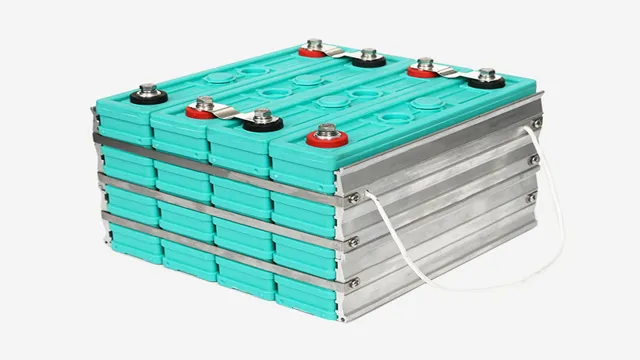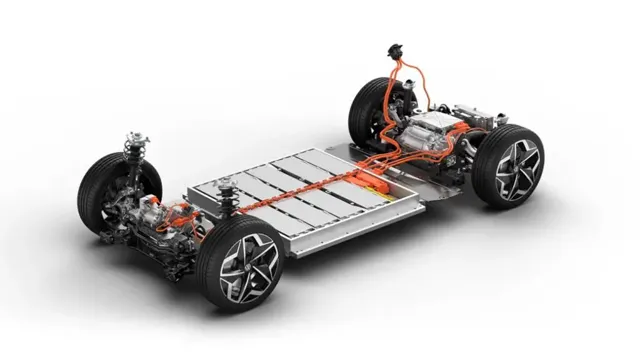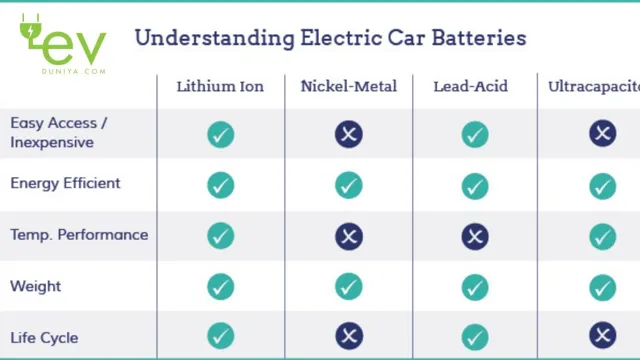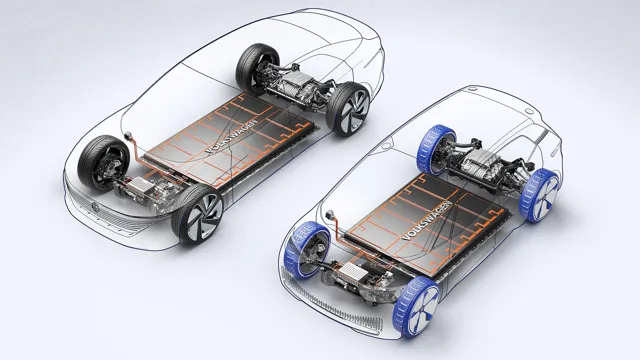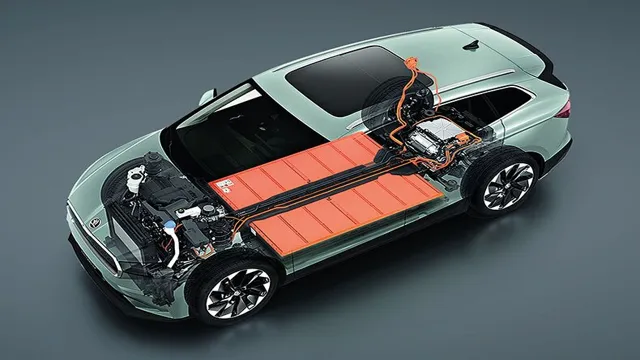Power Up Your Ride: How to Charge Your Car Battery with Electricity
Have you ever found yourself stuck with a dead car battery and wondered how to recharge it? Look no further, because the solution to your problem is simpler than you think – by using electricity! Charging your car battery with electricity is a convenient and effective way to get your vehicle up and running again. Similar to how our bodies need food to function, your car needs electricity to power its various components. The battery acts as the source of this electricity, storing and distributing it to the engine, lights, and other electrical systems in your vehicle.
When the battery dies, your car comes to a halt – but that doesn’t mean it’s game over. While you can jump-start your car with the help of another vehicle, charging your battery with electricity is the most efficient and long-term solution. All you need is a charger and a power source.
Just like giving your phone a boost with a charger plugged into an outlet, your car battery can be charged through a similar process. But wait, can’t you just connect the battery to some wires and give it a quick jump? Unfortunately, it’s not that simple. Jump-starting a battery can provide it with a quick charge, but it doesn’t fully recharge it – and if your battery is already weak, jump-starting it repeatedly can even damage the battery.
With electrical charging, you can fully replenish the battery’s energy and avoid further damage. Plus, it’s a user-friendly process that anyone can learn how to do. So next time you find yourself unable to start your car, don’t panic – just charge up that battery with some electricity!
Understanding Your Car Battery
If your car battery has died, you might be wondering how to charge it with electricity. First, you’ll need a car battery charger that can be plugged into a standard electrical outlet. Once you have your charger, it’s important to identify the positive and negative terminals of your car battery.
You’ll then need to connect the positive and negative cables of your charger to these terminals, making sure to match the positive and negative signs. Once your cables are connected, plug in your charger and wait for the battery to charge. It’s important to note that overcharging your battery can damage it, so it’s important to monitor your charger and disconnect it as soon as your battery is fully charged.
By following these steps, you can easily charge your car battery with electricity and get back on the road in no time!
Different Types and Sizes of Car Batteries
As a car owner, it’s essential to understand your car battery and its different types and sizes. Your car battery serves as the heart and lifeblood of your vehicle, providing the energy to start the engine and power your vehicle’s electrical system. Car batteries come in diverse sizes, ranging from small to large, and they also come in various types, including lead-acid, lithium-ion, and nickel-cadmium.
The most common type of car battery is the lead-acid battery, which is also the most cost-effective. Lithium-ion batteries are more advanced and popular in hybrid and electric cars since they can store more charge. The size of your battery is vital, and it impacts your car’s performance and durability.
A larger battery has more capacity and can store more energy, but it also takes up more space. Therefore, it’s essential to choose the right battery size that fits your car’s engine compartment. By understanding your car battery, its types, and sizes, you can make an informed decision when it’s time to replace it, ensuring your car stays reliable and safe on the road.
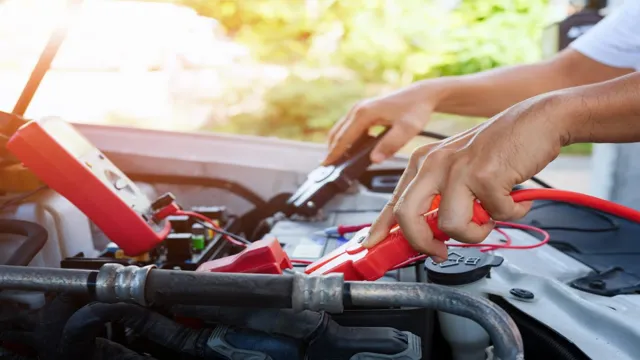
Knowing the Voltage and Amp Hours of Your Battery
Understanding Your Car Battery: Knowing the Voltage and Amp Hours Your car battery is the heart of your vehicle, providing the power it needs to start up and keep running. Understanding the voltage and amp hours of your battery can help you determine its capacity and ensure it’s working at its best. The voltage of your battery refers to its electrical pressure, which is measured in volts.
Most cars run on a 12-volt battery, but some may require a 6-volt or 24-volt battery. Meanwhile, amp hours represent the battery’s ability to store energy over time. In other words, it measures how long your battery can supply a certain amount of current before it runs out of charge.
Typically, car batteries have around 40 to 80 amp hours, but the exact amount can depend on the make and model of your car. Knowing the voltage and amp hours of your battery can help you troubleshoot issues and ensure you’re never left stranded with a dead battery.
Tools and Materials
If you need to charge your car battery at home, you’ll need a few key tools and materials to get the job done safely and effectively. Of course, the most important thing you’ll need is electricity. You can use a standard wall outlet to charge your battery, but keep in mind that this can take a while, especially if your battery is quite depleted.
If you have a battery charger, that can make the process faster and more efficient. You’ll also need a pair of safety goggles, gloves, and a battery acid neutralizer in case of spills or accidents. Be sure to follow all instructions carefully and take your time to ensure that you charge your battery correctly and safely.
By taking the time to learn how to charge your car battery properly, you can save yourself time, money, and frustration in the long run.
Charger Types and Ratings
When it comes to powering our devices, it’s important to know the different charger types and ratings. There are two main charger types: wall chargers and portable chargers. Wall chargers are designed to be plugged into an electrical outlet while portable chargers are meant to be taken on-the-go and often have a battery built-in.
Charger ratings are typically measured in volts and amps. Volts refer to the amount of electrical pressure that the charger provides while amps refer to the flow of electrical current. The higher the voltage and amperage, the faster a device will charge.
It’s important to match the charger rating with the device being charged to ensure maximum efficiency and avoid damaging the device. Additionally, it’s important to use the correct cable that matches the charger and device being charged. By understanding the different charger types and ratings, you can ensure that your devices stay charged and in good condition.
Safety Equipment and Precautions
When it comes to working with tools and materials, safety should always be the top priority. This means using the right safety equipment and taking necessary precautions to prevent accidents and injury. Some tools and materials may require specific safety equipment such as eye protection, gloves, or a respirator.
It’s also important to be familiar with the tool or material you are working with and following any instructions or guidelines provided. In addition, keeping a clean workspace and properly storing tools and materials can help prevent accidents. Remember, using tools and materials safely not only protects you but those around you as well.
So, before beginning any project, make sure you have the necessary safety equipment and take precautionary measures to ensure a safe and successful outcome. Stay safe!
Steps to Charge Your Car Battery
To charge a car battery with electricity, you will need a few tools and some basic knowledge. The first step is to ensure that the battery is disconnected from the vehicle. This prevents any electrical surges or accidents.
Locate the positive and negative terminals and connect the charger’s cables accordingly. The positive terminal is usually red, while the negative is black. Once the connections are secure, plug the charger into an electrical outlet and let it charge for several hours.
Avoid charging too quickly as it can damage the battery. Some chargers have automatic shut-off features when the battery is fully charged, while others require manual monitoring. Overall, charging a car battery with electricity is a simple process that can be done with the right tools and safety precautions in place.
Preparation and Safety Measures
Preparing to charge a car battery requires a few essential safety measures. Before beginning, you should ensure that all accessories and lights are switched off and that the vehicle is in park. Make sure to wear protective gloves and goggles to avoid any risk of an electrical shock.
Locate the battery on your vehicle, which is normally under the hood and typically covered by a plastic protector. It is important to know the voltage and power of your battery, which should be listed in the owner’s manual or on the battery itself. Double-check the battery and battery cables for any damage or corrosion, as this could cause a potential safety hazard or lead to further battery issues.
Also, it is advised to charge the battery in well-ventilated areas, as the gasses created during the charging can be harmful when inhaled. Taking these precautions and preparing your vehicle properly will ensure that the charging process is as safe and effective as possible.
Connecting the Charger to Your Battery
To charge your car battery, you’ll need to connect the charger properly to your battery. The first step is to locate the battery and remove its cables so that you can safely connect the charger. Once you’ve done this, you’ll need to ensure that the charger is set to the right voltage and amperage so that it can charge your battery effectively.
In most cases, the voltage and amperage settings will be clearly marked on the charger, but you may need to consult the charger’s user manual for guidance. Once you’ve got the settings dialled in, you can connect the leads to the terminals on your battery. Typically, you’ll connect the red lead to the positive terminal and the black lead to the negative terminal.
Once you’ve made the connections, you can plug the charger in and switch it on. The charging process will usually take a few hours, so you’ll need to be patient and let it do its thing. After the battery has been fully charged, you can disconnect the charger and reconnect the battery cables.
It’s important to follow these steps carefully and ensure that everything is properly connected to avoid damaging your battery or the charger.
Monitoring the Charging Process
Monitoring the charging process of your car battery is crucial to ensure its long life and optimal performance. Before starting the charging process, make sure that your car’s battery is compatible with the charger you plan to use. The first step is to connect the charger to your vehicle’s battery according to its user manual.
Once the charger is connected, switch on the charger and monitor the battery voltage using a digital voltmeter. The voltage reading should increase gradually and stabilize at a specified level. If the voltage reading is too high or too low, stop the charging process immediately, as it can damage your car’s electrical system or even cause an explosion.
Additionally, some chargers come with monitors that display the charging progress, time remaining, and estimated charge level. It is crucial to keep an eye on the monitor to avoid overcharging or undercharging the battery. In conclusion, proper monitoring of the charging process is key to ensuring the longevity and performance of your car battery.
Checking Your Car Battery Health
If you want to check the health of your car battery, there are various methods to do so, but one of the best ways is to use a multimeter to measure the voltage and electric current. If you notice that your car battery is below a certain level of voltage, it is likely time to consider charging it with electricity. Charging a car battery with electricity is not particularly difficult, but it is important to follow the manufacturer’s guidelines and safety protocols.
Using a charger with the correct amperes rating is key to avoid damaging the battery. Generally, a battery charger equipped with an automatic charging feature will be more convenient and efficient, as it will prevent overcharging. On the other hand, if the battery is already damaged or old, it may need to be replaced, as simply charging it may not fix the issue.
Always make sure to check your car battery health regularly to avoid being left stranded with a dead battery.
Testing Your Battery’s Voltage and Amp Hours
Car Battery, Testing, Voltage, Amp Hours Your car battery’s health is critical to ensuring your vehicle runs smoothly. One way to check if your battery is functioning correctly is by testing its voltage and amp hours. Voltage refers to the electrical potential difference between two points and is measured in volts.
The average car battery should have about 16 volts when fully charged. On the other hand, amp hours measure how much energy your battery can store and supply over time.
This measurement is represented by the abbreviation “Ah.” Checking your car battery’s voltage and amp hours is essential to determine if it has enough power to start your car or if it is time for a replacement. You can perform this test yourself by using a multimeter, which is readily available at most hardware or automotive stores.
Just ensure the engine is off, and all electrical power is switched off before testing. It’s always a good idea to check your car battery’s health from time to time to ensure it doesn’t cause any unforeseen breakdowns or inconveniences.
Conclusion and Final Thoughts
In conclusion, charging your car battery with electricity is one small step for your car, but one giant leap for sustainable energy. It’s like giving your car a power-up, but instead of mushrooms or stars, it’s the power of clean and renewable energy. So, whether you’re charging your car in your garage or at a charging station, you can feel confident that you’re doing your part in driving towards a brighter and cleaner future.
“
FAQs
How long does it take to charge a car battery with electricity?
The charging time for a car battery varies from model to model and depends on the charger’s capacity. A standard 12-volt car battery typically takes around 4-6 hours to fully charge.
Can you charge a car battery with a regular electric outlet?
Yes, you can charge a car battery with a regular electric outlet. However, it is important to use a compatible charger or adapter to avoid any damage to the battery or the electrical system of your car.
What are the risks of charging a car battery with electricity?
The main risk of charging a car battery with electricity is overcharging, which can cause the battery to overheat, leak or even explode. It is essential to use a properly rated charger and follow the manufacturer’s instructions carefully.
Is it necessary to disconnect the car battery before charging it with electricity?
In most cases, it is not necessary to disconnect the car battery before charging it with electricity. However, it is recommended to read the user manual of your car and charger to ensure that it is safe to charge the battery while connected to the car’s electrical system.


